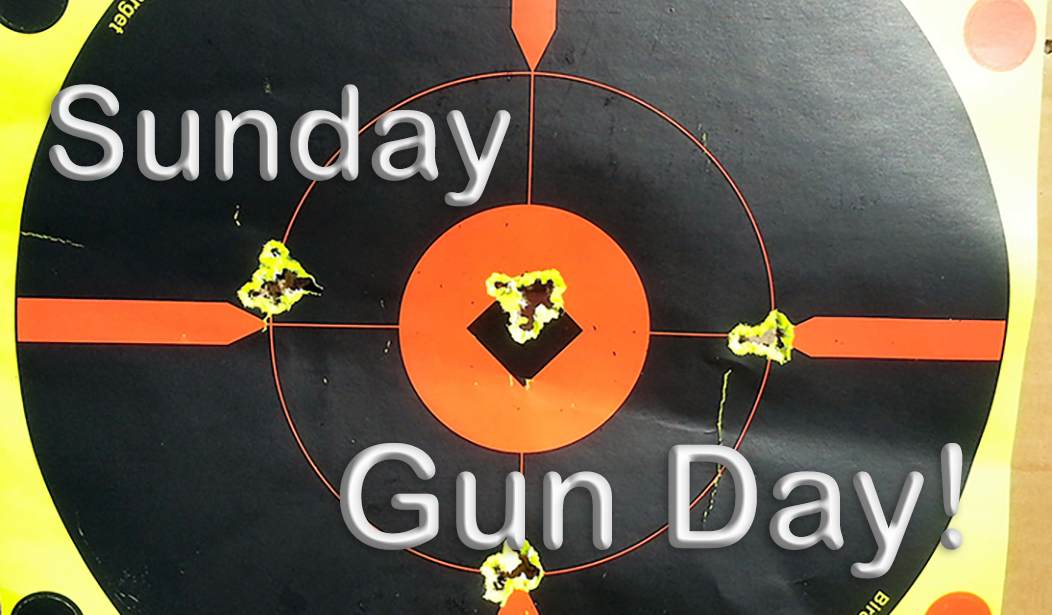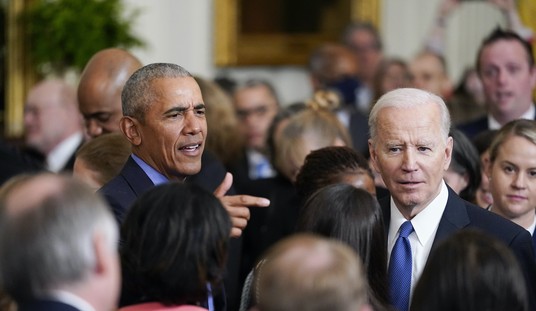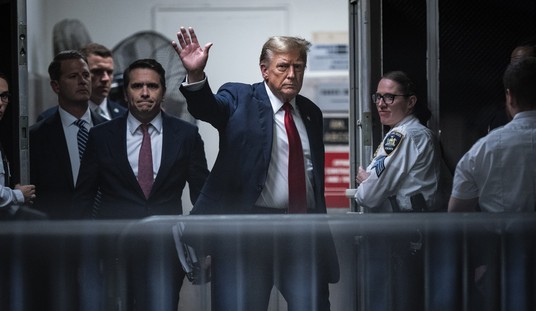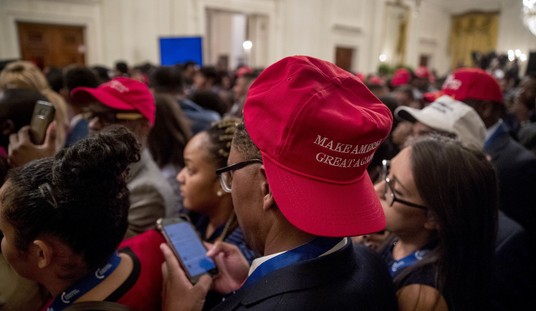Savage’s New Power Levels
Last week we discussed one lever gun that broke some new design ground, that being the great Savage 99. Ironically, the only moderately successful Winchester 88 copied the broad pattern of an older and much more successful Savage 99. During the 20th century, Savage greatly expanded the 99’s range of chamberings, eventually offering not only the original .303 Savage but also the .32-40 Winchester, .300 Savage, .30-30 Winchester, .25-35 Winchester, .250 Savage, .22 Savage Hi-Power, .22-250 Remington, .243 Winchester, .308 Winchester, .358 Winchester, 7mm-08 Remington, .284 Winchester, .38-55 Winchester, .375 Winchester and the .410 shotgun hull.
Flashback: Sunday Gun Day XXV - The History of the Lever Gun, Part I
Sunday Gun Day XXVI - The History of the Lever Gun, Part II
For a woods rifle, the tough Savage 99 chambered for the .358 Winchester, maybe the best brush-gun cartridge ever made, is hard to beat. Now I’m trying to think of a reason why I don’t already have one in the safe.
The striker-fired Savage had the solid receiver top that, like the Marlin offerings, allowed the proper mounting of a scope low and centered on the receiver. Unlike the Marlins it was striker-fired, making for a faster lock time and less chance of a wobble between trigger break and primer fire.
Sadly, the great 99 didn’t survive the 20th century, as production ceased in 1998. Savage still makes their 110 bolt gun in a bewildering variety of options, as well as shotguns and (like seemingly everyone else) an AR-15 pattern rifle. But while the fine old 99 is no longer produced, many were made, and the online auction houses always have a good selection. It’s a rifle worth looking into.
Winchester and Savage spent much of the 20th century pushing the more modern line in lever guns, but in the '60s, a new rifle under an old name was about to take things to the next level.
Browning Enters the Fray
Way back in 1878, the Browning Arms Company was founded by the man himself to market his non-military arms not built by other manufacturers. In 1969, this Browning Arms Company, manufacturing in the FN works in Belgium, introduced the ultimate lever-action rifle: The Browning Lever Rifle, or BLR.
The BLR, like the Winchester 88 before it, used the lever to operate a bolt-gun-like rotating bolt. Also like the Model 88, the BLR fed from a box magazine and had a pinch-free trigger that moved with the lever. Unlike the Model 88, it used a very smooth geared system that allowed for a short bolt throw, and also came in both short- and long-action versions to enable it to digest a bewildering variety of calibers, including the big belted magnums; in all the BLR was sold chambered for the .22-250 Remington, .223 Remington, .243 Winchester, .257 Roberts, .25-06 Remington, .270 Winchester, .270 Winchester Short Magnum, .284 Winchester, .30-06 Springfield, .300 Winchester Magnum, .300 Winchester Short Magnum, .308 Winchester, .325 Winchester Short Magnum, .358 Winchester, .450 Marlin, 7mm Remington Magnum, 7mm Winchester Short Magnum and the 7mm-08 Remington.
Here at last was a fully modern lever gun, capable of long-range accuracy and cartridge power levels rivaling the current bolt guns. Originally built in Belgium in the mid-'70s, the BLR’s production, along with a bunch of other Browning designs, switched to manufacture at Mikoru in Japan; ironically, fine guns with a famous name were now built in a nation which makes it nearly impossible for the workers in that plant to own the very items they produce. The BLR was revamped in 1995, including the change from a forged steel receiver to a cast aluminum version. The gun continues in production to this day.
Also in 1969, Browning doubled down by introducing the BL-22, also made in Belgium, a finely crafted, short-throw .22 lever gun. The BL-22, like its big brother, featured side ejection and a trigger that moved with the neat little, short-throw lever. Like most .22 rimfires, the Bl-22 loads through a port in the tube magazine.
Unlike a lot of manufacturers, Browning didn’t treat its rimfire lever gun as the second tier. The BL-22 was made available in all the various grades of wood and finish as its larger brothers, and in the higher grades commanded a significant price for the time; now, shooters could take some fancy hardware into the woods in squirrel season.
The interesting thing about Browning’s introductions here is the timing. Only five years after shooters were roundly disappointed by the apparent decline in quality of post-1964 Winchester, Browning brings to the table two fully modern lever guns, one firing a wide range of powerful big-game cartridges, the other a finely made graceful rimfire. Browning was going after Winchester’s market share, and that is something that would make the 21st-century movements of gun company ownership rather interesting.
Modern is as modern does, but late in the 20th century shooters began to feel the stirrings of nostalgia. That led to some opportunities for new guys.
The Replicators
A detailed discussion of replica lever gun manufacturers would require an article unto themselves, so we’ll have to settle for hitting the high points here.
The popularity of Western movies and the rise of Cowboy Action shooting led to the lever-gun and single-action revolver market’s exploding in the last few decades of the 20th century. It didn’t take long for replica manufacturers to start turning out lever guns.
In the late '70s, an outfit called Navy Arms started importing guns from a variety of sources. One of those was the Rossi/Braztech clone of the 1892 Winchester, then a neat, affordable little gun. The initial version was pretty much an exact copy of the original Browning design; later, import/export rules required the addition of an external safety, to which Rossi responded by sticking the world’s ugliest firing pin block safety awkwardly on the top of the bolt.
But while Rossi held the lower end of that market, outfits like Uberti, Pedersoli, and Cimarron were cranking up to produce some great, high-end replicas. Almost every model from the original Henry to the 1866, 1873, 1876, 1886, 1892, and 1894 Winchesters were eventually represented, along with the 1860 Spencer and the 1883 Colt-Burgess.
And Then This Happened
The modern era kicked in, with its sudden focus on all things Tacticool. The 21st Century saw the genesis of odd things like monster revolver rounds, legitimized wildcat rifle rounds for every conceivable special purpose, and the odd habit of hanging Picatinny rails on every available bit of a gun’s real estate. The 21st also saw an increased hue and cry from the political Left to do something about a few highly publicized and highly politicized shootings carried out with semi-auto rifles, and a few localities started restricting those rifles; this suddenly opened some fertile new ground for lever gun manufacturers.
But the 21st century also saw the sale and reorganization of some fine old gun companies, and that wasn’t necessarily to the benefit of shooters.
And Now… The Present
I’m a little surprised, given the current state of affairs in the United States with idiots screeching like banshees about “assault weapons,” that someone has not yet introduced a medium-caliber lever gun that will take, say, an AR or AK magazine. That would be an effective weapon in the hands of even a halfway-competent shooter.
See Related: Supreme Court Allows Illinois' Semi-Automatic Weapons Ban to Stand, but the Fight Isn't Over Yet
But in this modern era, the makers of lever guns have given over to the Tacticool craze – but not all of them, and for those that have, they still also make some traditional models. There are some new faces in the lever gun game, and some new combinations of old faces as well. So, let’s look at what the lever gun market looks like right now.
Winchester and Browning
The relationship of Browning and Winchester is complex, somewhat incestuous, and requires some unraveling. As this installment is looking at the present state of affairs in lever guns, we’ll only examine the most recent parts of that relationship.
Remember Winchester’s failure, the sale to New Haven employees, and the final collapse and bankruptcy of US Repeating Arms? In 1989, when US Repeating Arms went bankrupt, it was acquired by the Belgian Herstal Group, which owns several other gun companies, including Fabrique Nationale d'Herstal (FN) – and the Browning Arms Company. This didn’t immediately affect lever gun production, which was limited to the Model 94 at that time; but in March of 2006, the company decided to shut down production of the Model 94 along with the Model 70 bolt rifle and the Model 1300 shotgun.
This was a sad day for American shooters; fortunately, the situation didn’t last. In August of that same year, the Olin Corporation, who still owned the Winchester trademark, announced an agreement with Browning to manufacture the 1886 and 1892 lever guns at the Mikoru plant in Japan. In 2010, FN began manufacture of the 1894 Winchester at Herstal. The new lever guns replaced the original stupid cross-bolt safety with a stupid tang safety that, while still extraneous, at least did not screw up the lines of the guns as much. I've always maintained that a gun with an external hammer requires no mechanical safety beyond that, and besides, as my Old Man always reminded me, the only safety you can always rely on is the one between your ears.
Now the picture for American lever-gun fans was improving and would continue to do so over the next few years as the Herstal-owned Winchester gradually reintroduced the Model 1866, Model 1873, and the great Model 1895.
Modern Winchester lever guns command a hefty price, with all the models running well over four figures. But with guns as with so many other things, you get what you pay for, and after their trials and tribulations – and bear in mind this is coming from a pre-64 Winchester snob – what you get from the new Winchester is damn good.
In a final and interesting twist, Winchester has now begun once more offering the 94 chambered for the .32 Winchester Special, just in case you’re among the folks who doubt that this new-fangled smokeless powder is really here to stay. And if a more modern gun is to your taste, Browning still makes their excellent BLR.
Winchester and Browning’s relationship began with the 1886 Winchester and continued through the effective merging of those companies. In recent history, though, another big lever gun manufacturer went through another acquisition, albeit not with a company bearing such a long history of association.
Marlin and Remington
While Marlin finally outpaced Winchester as America’s number one lever gun manufacturer in the 1990s, and while Marlin didn’t suffer the perception of quality lapses in the 1960s that Winchester did, that didn’t withhold them from being caught up in the round of company acquisitions that so many gun companies went through in the 21st century.
Late in 2000, Marlin bought out Harrington & Richardson (H&R), a company best known for inexpensive single-shot shotguns and the budget single-shot Handi-Rifles. But only seven years after this acquisition, Marlin would themselves be acquired.
In early 2007, the great American gun company Remington was struggling. The company had been operating at a loss for years; longtime corporate owner DuPont had divested itself of the firearms manufacturer fourteen years earlier. In June of 2007, Remington’s recovery began with their purchase by Cerberus Capital Management, later renamed the Freedom Group. In December of that year, the Freedom Group-owned Remington bought Marlin, bringing the country’s second-oldest lever-gun manufacturer under Big Green.
Then, in 2021, Big Green’s financial problems forced another sale; enter Ruger, who bought the Remington and Marlin properties; if you buy a new Marlin, it’s actually a Ruger.
The new Marlin offers a larger variety of lever guns than the reconstituted Winchester. The great old 336 is still available in blue and stainless trims, as is the old Model 94. The 1895 and 444 are still available, and the 1895 likewise in stainless and blue. The Marlin 39 .22 rimfire is still made and is still an excellent shooter. Marlin has also brought out a couple of new offerings recently on the great old 336 action, that being the 308 Marlin Express, chambered for a sort of rimmed .308, and the Marlin XLR, chambered in the .30-30, .35 Remington, and the .308 Marlin Express. The XLR was purpose-made for Hornady’s Leverevolution ammunition, designed to let tubular magazine lever guns use pointed bullets.
While this ammo is turning in some pretty good performance by all accounts, one must be cautious with older Marlins. Overall cartridge length is critical in making lever guns run well, and the Hornady stuff seems to run long. While my old .30-30 336 feeds my handloads with the Hornady bullets just fine, I bought some factory rounds to try in the Bullwhacker, and the .45-70 versions jammed up on the cartridge lifter; they were just a bit too long for my mid-Nineties 1895G to feed well, although it digests every other factory round I’ve tried just fine, including some pretty incredible Garrett and Buffalo Bullet Company loads.
Marlin today is, like the new Winchester, a great company offering great products. Their rifles, as throughout their history, are a bit cheaper than the Winchesters, but that makes them in no way less effective.
But Winchester and Marlin were about to get some company in the lever gun market. There were some new kids on the block, new kids bearing an old name; there were also some old kids bearing an old name who were looking to branch out.
Henry
In 1996, a guy named Louis Imperato and his son Anthony Imperato obtained the rights to use the name “Henry” in relation to lever-action rifles and proceeded to do so, launching the Henry Repeating Arms company and shipping their first model, a lever-action .22 rimfire, in March of 1997. The .22 Henry was followed by the Henry “Big Boy” in a variety of revolver cartridges, after which the Imperatos topped things off by resurrecting the original Henry rifle in .44-40 and .45 Colt calibers.
Henry adopted a marketing tactic that wasn’t exactly new but did set them apart from the Mikoru-made Winchester offerings; they heavily advertised their guns as completely made in the USA. That resonated well with a lot of American shooters and Henry quickly realized success, leading them to expand their line.
The Henry centerfire line was expanded to regular lever gun rounds including the .30-30 and even the .45-70. But like the original, the new Henry rifles have a weakness, the magazine.
While tubular-magazine lever guns from Winchester and Marlin load through a spring-loaded, hinged gate in the receiver, the Henry’s centerfire offerings copied the loading feature from their original .22 and, indeed, from all lever-action .22 rimfires; they load through an aperture in the underside of the magazine tube. Later Henry models added a traditional loading gate but for some reason kept that hole in the magazine tube.
Not only does this seem a rather cheesy cost-cutting feature in a rifle that otherwise seems to be very solid and well-made, but it also has two other significant disadvantages; first, it requires dismounting the gun and removing the magazine tube to reload, as opposed to poking fresh rounds in through the gate, second, it allows dirt, dust, and grit to get into the magazine tube, possibly jamming the gun up in the field.
But then Henry had a stroke of luck with a new rifle called the Long Ranger.
This new offering was something different, a modern lever gun broadly similar to the excellent Browning BLR; the Long Ranger has a gear-driven, short-throw lever driving a rotating locking-lug bolt, a detachable box magazine, and comes chambered in .223 Remington, .243 and .308 Winchester and the 6.5 Creedmoor. This gave shooters a chance at a fully modern big-game lever gun at a much lower cost than the Browning BLR.
While Henry was plowing and sowing this fertile new ground, though, a much older but still family-owned company was looking at the lever gun market and seeing some potential for their own offering.
Mossberg Enters the Market
For a complete story here, we must cast our optics back a few decades.
In 1919, the Great War had just ended, and a company named Marlin-Rockwell that manufactured machine guns duly closed their doors. Among the employees laid off from that company was a 53-year-old Swedish immigrant named Oscar Frederick Mossberg.
Since Mossberg had some experience in firearms, going into business for himself seemed the logical thing to do, so he took his sons Iver and Harold and formed the O.F. Mossberg and Sons company. While they started with the .22 caliber Brownie pocket pistol and then moved into rimfire rifles and shotguns, including eventually the famous Model 500, they dabbled in the lever gun market with a .22 rimfire gun, the Model 400, which was manufactured from 1959 to 1964, never achieving much success. But in 1972 Mossberg entered the centerfire lever gun market with the Model 472, essentially a clone of the popular Marlin 336, chambered in .30-30 and .35 Remington.
The 472 was rather more popular than the rimfire 400 had been, but it never approached the very similar Marlin in sales. It’s still a good solid rifle, and it’s not hard to find used examples on the various auction sites; if one is looking for a very reasonably priced, solid, and reliable .30-30, there are plenty of worse choices you could make.
Still, one good clone deserves another. In 2008 Mossberg brought out the Model 464 lever-action, in calibers .30-30 and .22 long rifle.
Mossberg and Henry have some interesting things in common. Both companies manufacture only in the U.S.; both are still family-owned. But while Henry built lever guns mostly to their own pattern, Mossberg went in for adapting other designs. The Mossberg 464 in centerfire and rimfire versions were a thinly veiled copy of the Model 1894 Winchester and the 9422 Winchester.
Mossberg remains today as it always has been: an American company producing solid, reliable arms at reasonable prices. They may not have the fit and finish of more expensive guns, but if you are afield with a Mossberg in your hands, you can be damned sure it will go bang when you pull the trigger.
Also, Mossberg has one other talent as a company: They can see trends and take advantage of them. As the first decade of the new century ended, they did that with their 464 lever gun.
The Tacticool Lever Gun?
In 2013, Mossberg introduced another version of their 464 lever gun.
The SPX lever gun was, to put it plainly, something of a parody of the Tacticool craze. It used the 464 action but appended a telescoping stock, a synthetic fore-end with several Picatinny rails, and a muzzle brake.
See Related: Judge Allows Challenge to New York 'Assault Weapon' Ban to Proceed
By this point Tacticool-izing lever guns (along with every other kind of gun) were becoming all the rage. Black plastic replaced polished walnut as the stock-making material of choice, while Picatinny rails rather than Redfield or Weaver mounts were the choice for mounting optical sights. I’ve relented myself to the extent of placing a Picatinny rail on the forward receiver and barrel of my own Bullwhacker, the better to mount the IER scope that the lightweight .45-70’s recoil warrants.
Still, as noted previously, there may be more thought going into this than old walnut and blued steel-worshipping stick-in-the-muds like me might at first consider. Consider for a moment the state of the gun rights controversy today, and how much of it focuses on “scary” black rifles. Consider the number of jurisdictions that have banned, partially banned, or tried to ban scary black semi-autos.
Now, consider how little difference there is for an experienced shooter to deliver aimed rounds from a semi-auto vs. a medium-caliber lever gun. I can tell you this, having served in Uncle Sam’s colors and also having spent a tad over fifty years in the game fields, was I in any kind of scrap, had I to choose between facing a military REMF (Rear Echelon Military Folks) who hasn’t fired a rifle in his career except for annual qualifications, an overweight mall ninja with a supercool hyper-accessorized AR-15, or a grizzled old coot who has owned the same Winchester 94 or Marlin 336 for fifty years and is a wizard at using it, I know which one I’d want on my side.
So maybe there’s a bit of smarts behind the Tacticool lever gun thing after all. If there are any Glibs with a good machine shop at their disposal and a head for business, it might be interesting to see if one could come up with a lever gun firing the 7.32x39mm round (which is close to the .30-30 in power) and that accepts AK magazines. There may be a market for just such a gun.
The continued expansion of the replica market shows that there is an ample market for those guns as well.
More Replicators
Boy howdy, are there ever a wealth of replica guns of all kinds out there today, including many lever guns. While some of them are cheap knockoffs, many more are excellent, finely crafted, and beautiful guns, enough to warm any old codger’s heart. Virtually all the Winchester models as well as the 1860 Spencer and the 1883 Colt-Burgess are represented, as are the 1860 Henry. Uberti, Chiappa, and Rossi, all are represented, and some new players build some neat niche pieces. An outfit called Big Horn Armory is making a copy of the 1886 Winchester they call their Model 89, shooting the thumping .500 Smith & Wesson round. Taylors & Company makes some very fine replicas indeed, including an all-weather takedown clone of the Model 92 Winchester.
In fact, there’s one replica that, in reflection, makes me a little embarrassed that I neglected to discuss the original on which the replica is based. I’ll do so now.
In the late 1880s, Winchester was thinking of getting into the shotgun business. They had previously had a contract manufacturer produce some side-by-side doubles known as the Winchester Match Guns, but these were pricey items and only a few hundred were made. An old buddy of mine had one, one of the two Match Guns made in 20 gauge, and in fact, the very first 20-gauge shotgun to ever carry the name Winchester. Someone eventually made him an offer he couldn’t refuse, one good enough to enable him to considerably expand his collection of unfired New in Box (NIB) 1940s and 1950s Colt revolvers.
But now Winchester wanted a repeater. Remember that famous Ogden gunmaker Winchester had just signed a contract with at that time? The company asked him to design a repeating shotgun. John Browning advocated the pump-action, but Winchester said no; they were a lever gun company, and their repeating shotgun would be a lever gun. In due course Browning designed and Winchester introduced the Model 1887 shotgun, a big, blocky lever gun firing 12-gauge and 10-gauge rounds. That gun was refined somewhat a few years later and re-introduced as the Model 1901 in 10-gauge only.
The 87/01 was blocky and awkward. Browning continued his insistence that a pump was the way to go, Winchester relented, and Browning gave them the slim, handy Model 1897 pump gun, which Winchester engineer T.C. Johnson refined into the Model 1912, or just the Model 12 – arguably the finest pump shotgun ever made.
But I digress. The Model 1887 lever-action shotgun is made in replica form today by two manufacturers; Chiappa, who makes as good a gun as you can ask for, and Norinco, most of whose products are best suited as boat anchors. Chiappa even makes a version of their 1887 replica with a rifled barrel and rifle sights, making it a very fine deer gun for states restricted to shotgun slugs for big game.
And, as usual, the lever gun market has some outliers and oddballs.
And a Few Others
In 1996 Ruger pitched in with their Model 96, a slick little full-stocked lever gun chambered for the .44 Magnum. While the 96 was a handy little thing with some good short-range punch, it didn’t last; Ruger wasn’t known as a lever gun company, and the 96 just kind of faded out.
From 1961 until 1979 shotgun maker Ithaca also sold the Model 49 lever gun, both as a tube-mag repeater and as a single-shot with a false magazine tube. I had a Model 49 for a while, and while Ithaca has always had the reputation of being a solid gunmaker, the 49 is in my experience something of an exception, being whippy and rather cheap feeling. I eventually traded mine off for something else, and the fact that I can’t even remember the details of that trade may tell you something of the esteem in which I held that little .22.
And Then This Happened
Another series ended.
I confess to being at a bit of a loss as to what types of guns to write about next. Pump shotguns, maybe? The history of pump guns goes back nearly as far as the history of lever guns, and there are sure some standout examples (Pre-64 Model 12) from some names (Winchester) we’ve already studied. Maybe a series on shotguns in general, although that’s a wide time span from the first matchlock fowlers to the present. Feel free to make some suggestions in the comments.
There are also some tiny niche gun companies and oddball guns out there with interesting histories. Ever heard of a Hilton revolver? Remember the .22 caliber Daisy VL? The Crosman Trapmaster CO2 shotgun? The GyroJet pistols and carbines? The gun world is an embarrassment of riches for the aspiring historian, and I’m just getting started. Hang in there, dear readers – you ain’t seen nothin’ yet.













